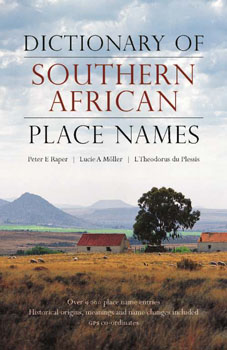 |
‘The Dictionary of Southern African Place Names’ provides not only the answers, but also gives insight into how our places and our people were shaped. Penned by three academics from the University of the Free State (UFS), it is the fourth edition of this fascinating book.
Prof Peter Raper from the UFS Unit for Language Facilitation and Empowerment, together with his colleagues Prof Theodorus du Plessis and Dr Lucie Möller, created more than a reference book. They provide the reader with deeper understanding of events, our heroes, beliefs, values, fears and aspirations.
Jonathan Ball Publishers describes the book as “the most comprehensive glossary of Southern African towns, villages, railway stations, mountains, rivers and beaches. The 9 000 short entries incorporate data from sources dating as far back as 1486, encapsulating the linguistic and cultural heritage of all the peoples of the subcontinent, past and present.”
And what would the origin of the name Bloemfontein be?
This dictionary provides the following answer.
“Capital city of the Free State and judicial capital of South Africa. It was established in 1846 by Major HD Warden at a fountain on the farm Bloemfontein, originally owned by a Griqua, Mauritz Pretorius. It has been claimed to have been named after a person with the surname Bloem, or in honour of the Khoikhoi chief Jan Bloem, or after an ox with this name. Probably, however, it was named after flowers growing at the fountain, from Dutch bloem, ‘flower’, fonteijn, ‘spring’. The name is thought to be a translation from a Bushman name of which Mangaung is the Sotho adaptation; ma- is the Sotho plural prefix or class marker; the component ngau is comparable to the Bushman word //au, ‘flower’, and the final ng is cognate with the locative demonstrative ?, ‘that (one) there’. Bloemfontein attained municipal status in 1880.”